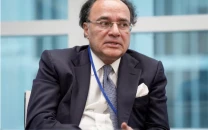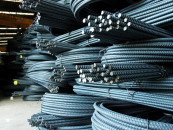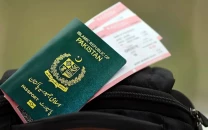Maryam seeks to pursue ‘smog diplomacy’ with Indian Punjab
CM calls for cross-border climate cooperation; enforces ‘green lockdown’

In a bid to curb the smog that has choked Lahore’s skyline, the Punjab Environmental Department has enforced a “green lockdown” across several high-smog areas of the city as the provincial government announced plans to collaborate with Indian Punjab to combat the environmental crisis.
The urgent measure comes as Lahore’s air quality dips to record lows, placing it among the most polluted cities worldwide.
Similarly, Punjab Chief Minister Maryam Nawaz called for collaborative efforts with Indian Punjab to address the shared environmental challenge, stressing the importance of cross-border cooperation in tackling pollution.
Data from air quality monitoring systems, installed in various parts of Lahore, indicates that the city’s smog has reached critical levels over recent days.
According to real-time air quality measurements gathered from government and independent sources, Lahore is currently among the top three most polluted cities globally, alongside Beijing and Delhi.
The city recorded an average Air Quality Index (AQI) of 168 as of the latest report, well within the range classified as “unhealthy”.
Global air quality monitoring agency IQAir has corroborated these findings, reporting that Lahore’s atmosphere has become significantly hazardous.
Their data shows PM2.5 concentrations reaching 79.6 micrograms per cubic meter—nearly 16 times the World Health Organisation (WHO) recommended annual limit.
PM2.5 particles are fine particulate matter less than 2.5 micrometres in diameter, small enough to penetrate deep into the lungs and enter the bloodstream, posing severe health risks, especially for children, the elderly, and individuals with pre-existing respiratory or cardiovascular conditions.
In response, the Punjab Environmental Department enacted the “green lockdown” in specific zones identified as smog hotspots.
Beginning Wednesday, the lockdown will cover densely polluted areas, including Davis Road, Egerton Road, Durand Road, and Kashmir Road, extending from Shimla Hill to Gulistan Cinema and Abbott Road.
Additional zones include Shimla Hill to the Railway Station, Empress Road, and Queen Mary Road, areas that have been marked as particularly susceptible to smog and air quality deterioration.
Under the restrictions, construction activities in these areas are now prohibited. Commercial generator use is also banned, along with a suspension of motorcycle rickshaw operations and a restriction on open-air barbecue activities after 8 pm.
The department aims to reduce emissions from these high-pollution sources and curb further worsening of the air quality. These measures are part of the province’s larger effort to control pollution levels as the winter smog season approaches.
Climate diplomacy
Chief Minister Maryam Nawaz, addressing a public event, stressed the necessity of “climate diplomacy” with India, particularly with the neighbouring Indian state of Punjab, to collaboratively address the worsening air pollution.
She underscored that pollution does not recognise borders, making it essential for both regions to coordinate efforts in controlling smog.
“I am considering writing a letter to the chief minister of Indian Punjab. This is not just a political issue, but a humanitarian one,” she said, adding that diplomatic efforts could foster cooperative policies to reduce pollution on both sides of the border.
“Winds don’t know there’s a border in the middle,” Nawaz added and called for parallel measures from the Indian side to reduce cross-border smog, especially as weather conditions in the region are likely to exacerbate the problem in the coming months.
‘Maryam to write to Delhi CM’
Meanwhile, Punjab Senior Minister Marriyum Aurangzeb presented the government’s initiatives on combating smog in a special session of the Punjab Assembly.
She shared steps being taken under CM Maryam Nawaz’s leadership, adding that the CM plans to initiate “Air Quality Index diplomacy” with India. For this purpose, CM Maryam will write to Delhi’s chief minister to engage the Indian government in addressing shared air quality concerns.
Aurangzeb reported that hospital admissions had risen by 34-35% over the past three months due to smog-related illnesses, stressing that Lahore’s green cover is currently at just 3.3%, far below the necessary 36%.
She added that Prime Minister Shehbaz Sharif has included clean air initiatives in the 26th Amendment, mandating that 1% of greenery be allocated in each project’s PC-1 in Punjab.
Crop residue burning, both locally and across the border, is closely monitored, she said, attributing 39% of smog to the C&W and Transport sectors, 15-20% to agriculture, and 5% to factories.
She highlighted a new vehicle fitness system launched in Punjab whereby vehicles failing inspection after three fines will face strict penalties.
Over 45,000 brick kilns have been inspected, with 6,500 demolished and others being converted to cleaner zigzag technology as part of a zero-tolerance policy against polluters.
Aurangzeb said that the government’s first committee focused on smog mitigation and that meetings have been held since the first circular was issued in October.
She warned that the smog issue requires a unified approach and criticised those politicising CM Maryam Nawaz’s diplomatic efforts with India.
The government has banned plastic bags and imposed regulations on construction vehicles entering Lahore. She mentioned that the government has acquired artificial rain technology and will consider its use when appropriate.
However, opposition leader Malik Ahmad Khan Bhachar criticised the minister’s remarks, claiming they did not reflect ground realities. He requested time to present a prepared response.
Layer the speaker adjourned the session until 2 pm on Thursday (today).
PM2.5 pollution
The primary pollutant in Lahore’s air, PM2.5, consists of fine particulate matter that is hazardous to human health due to its microscopic size.
At less than 2.5 micrometres in diameter—about 3% the thickness of a human hair—PM2.5 particles are small enough to evade the body’s natural defences, penetrating deep into the lungs and even entering the bloodstream.
As these particles are light and remain airborne for extended periods, they pose a higher risk of inhalation.
Research has established a strong correlation between long-term exposure to PM2.5 and serious health risks, including premature death from heart and lung diseases.
Chronic exposure can exacerbate asthma, trigger heart attacks, cause bronchitis, and lead to other respiratory complications.
Individuals with pre-existing conditions, as well as the young and elderly, are particularly vulnerable to these particles, which makes the air quality crisis in Lahore a pressing public health concern.
As Punjab takes these initial steps, Lahore’s residents are urged to limit outdoor activities, use air purifiers where possible, and wear masks to reduce exposure to airborne pollutants.
The Punjab Environmental Department is expected to continue monitoring the city’s air quality and adjust lockdown measures as necessary to protect public health.























COMMENTS (1)
Comments are moderated and generally will be posted if they are on-topic and not abusive.
For more information, please see our Comments FAQ